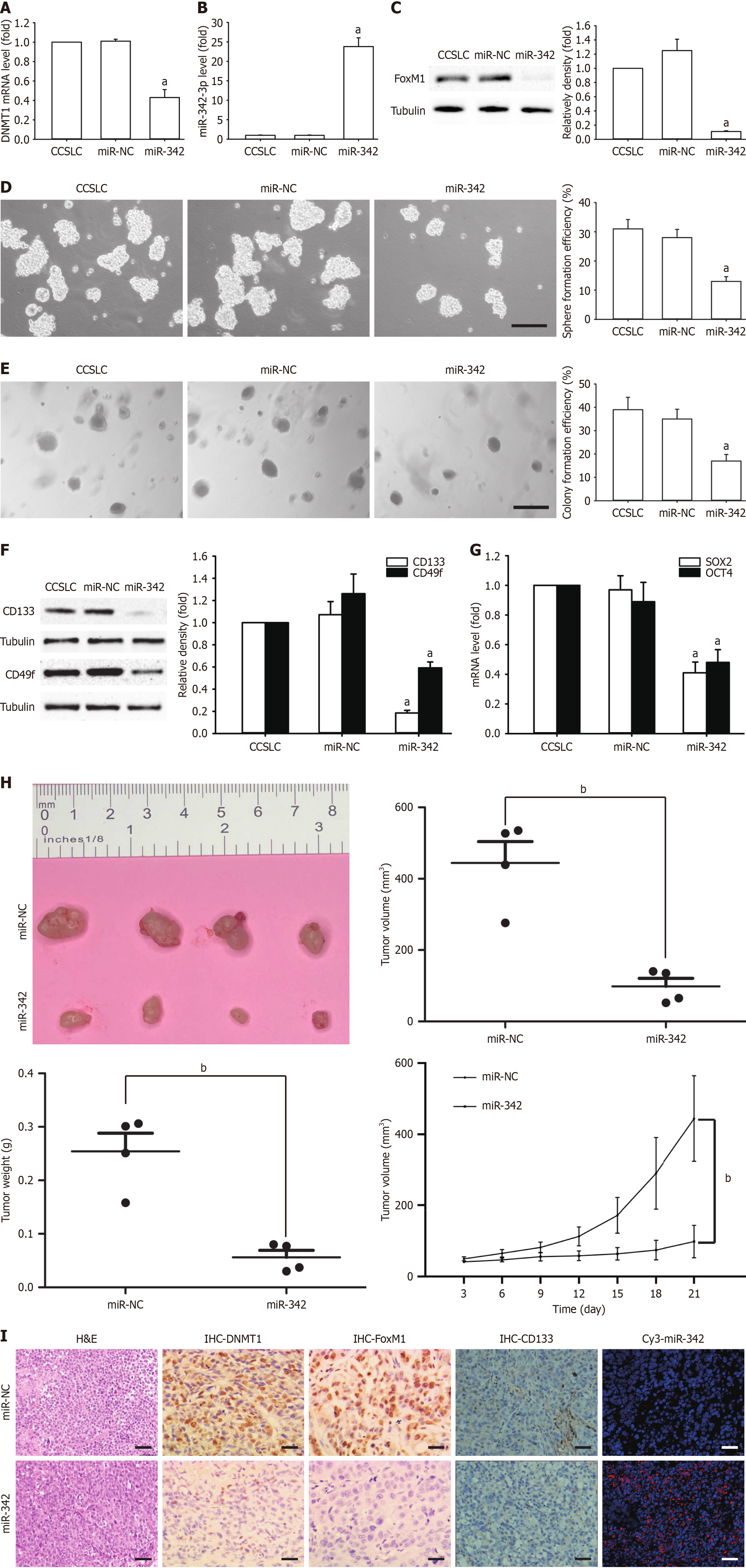Copyright
©The Author(s) 2025.
World J Stem Cells. Mar 26, 2025; 17(3): 99472
Published online Mar 26, 2025. doi: 10.4252/wjsc.v17.i3.99472
Published online Mar 26, 2025. doi: 10.4252/wjsc.v17.i3.99472
Figure 3 Effect of miR-342-3p mimic on self-renewal-related stemness of HeLa-derived cervical cancer stem cell-like cells.
A-C: DNA methyltransferase 1 (DNMT1) mRNA level (A), microRNA (miR)-342-3p level (B), forkhead box M1 (FoxM1) protein amounts in cervical cancer stem cell-like cells (CCSLCs) transfected with miR-342-3p mimic (C); D and E: Representative images of spheres and colonies (left) (scale bars = 100 μm); sphere formation efficiency and colony formation efficiency (right) in CCSLCs transfected with miR-342-3p mimic; F: CD133 and CD49f protein amount; G: SRY-box transcription factor 2 (SOX2) and octamer-binding transcription factor 4 (OCT4) mRNA amounts in CCSLCs transfected with miR-342-3p mimic; H: Subcutaneous xenografts of HeLa-derived CCSLCs (1 × 105) treated with miR-negative control (miR-NC) or miR-342-3p mimic (miR-342) (left); the comparison of tumor volume (middle left), tumor weight (middle right), and growth curves of tumor xenografts (right) between CCSLCs treated with miR-NC or miR-342; I: Micrographs of hematoxylin and eosin staining and immunohistochemistry to detect the expression of DNMT1, FoxM1, and CD133 proteins as well as in situ immunofluorescent hybridization for miR-342-3p (scale bars = 50 μm). Data were obtained from xenografts with four mice per group (n = 4). aP < 0.05 vs cervical cancer stem cell-like cells transfected with miR-NC (n = 4); bP < 0.01 vs cervical cancer stem cell-like cells treated with miR-NC. H&E: Hematoxylin and eosin; IHC: Immunohistochemistry.
- Citation: Cao XZ, Zhang YF, Song YW, Yuan L, Tang HL, Li JY, Qiu YB, Lin JZ, Ning YX, Wang XY, Xu Y, Lin SQ. DNA methyltransferase 1/miR-342-3p/Forkhead box M1 signaling axis promotes self-renewal in cervical cancer stem-like cells in vitro and nude mice models. World J Stem Cells 2025; 17(3): 99472
- URL: https://www.wjgnet.com/1948-0210/full/v17/i3/99472.htm
- DOI: https://dx.doi.org/10.4252/wjsc.v17.i3.99472









